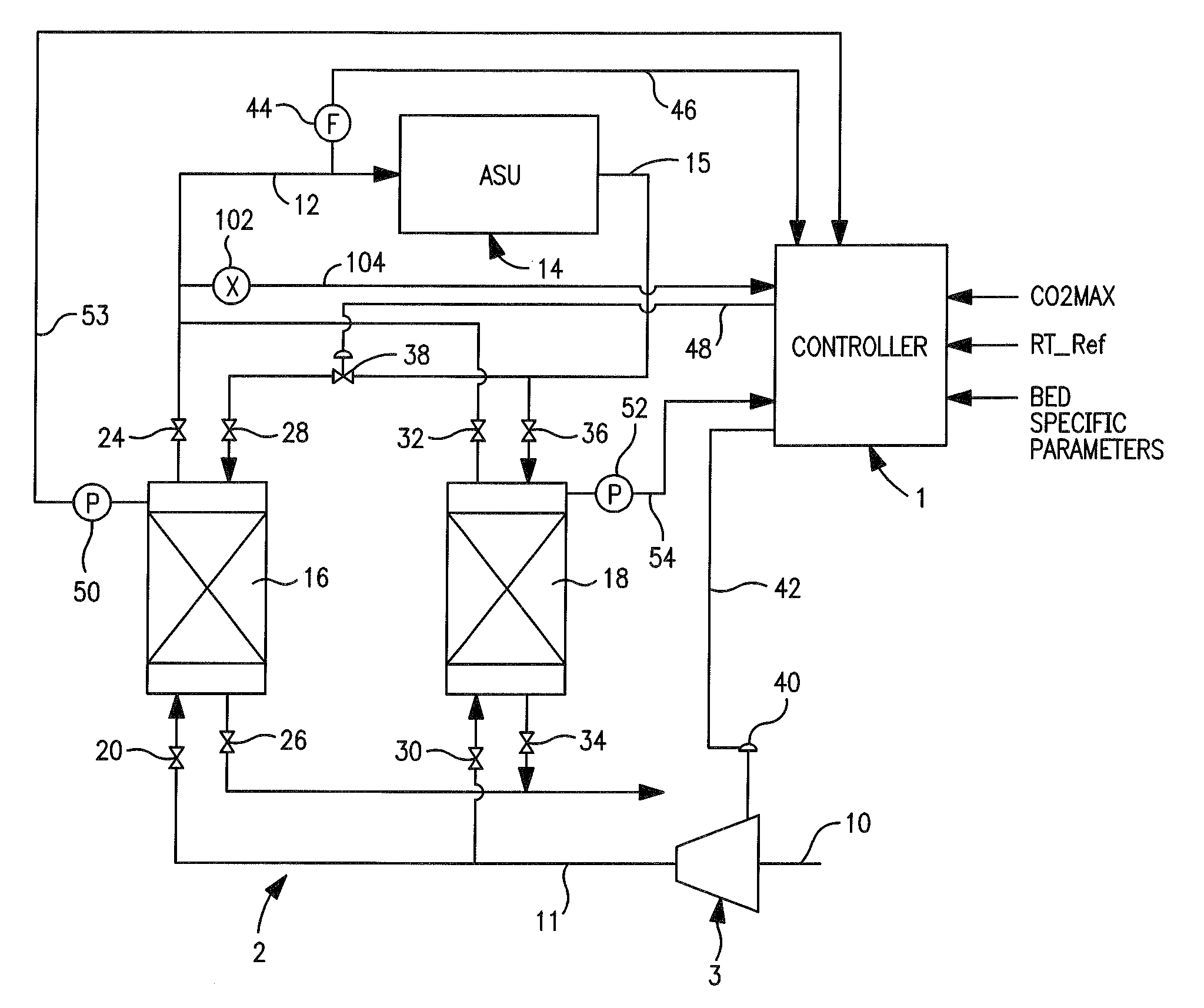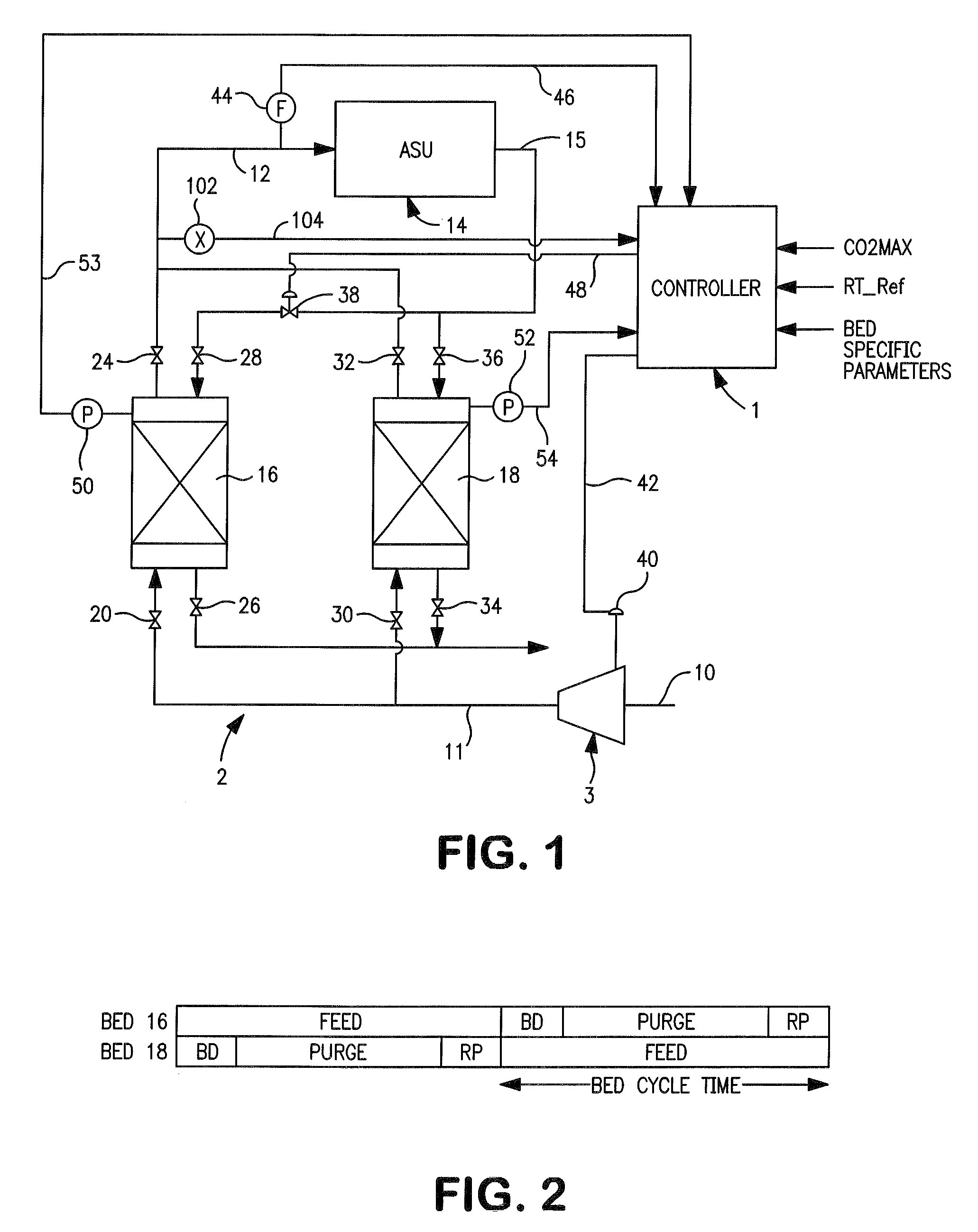Adsorbent bed repressurization control method
a technology of adsorbent bed and control method, which is applied in adaptive control, separation processes, instruments, etc., can solve the problems of reducing the flow rate of products, reducing the repressurization performance, and reducing the repressurization time. , to achieve the effect of extending the bed cycle time, and reducing the repressurization tim
- Summary
- Abstract
- Description
- Claims
- Application Information
AI Technical Summary
Benefits of technology
Problems solved by technology
Method used
Image
Examples
Embodiment Construction
[0028]With reference to FIG. 1 a controller 1 in accordance with the present invention is illustrated for use in connection with the control of a pressure swing adsorption unit 2 and its associated compressor 3. A feed stream 10 is compressed by compressor 3 to produce a compressed feed stream 11 that is fed into pressure swing adsorption unit 2 to produce a product stream 12 that is fed into an air separation unit cold box 14 (“ASU”) as the main feed air.
[0029]It is understood that the use of the present invention in connection with air separation cold box 14 is for purposes of illustration only and is not intended to be limiting. This being said, as would be known by those skilled in the art, air separation unit cold box 14 would have one or more distillation columns for rectifying the air contained within feed stream 10 to produce a nitrogen product or possibly also, an oxygen product and an argon product. In this regard, the air separation unit cold box 14 is also provided with ...
PUM
| Property | Measurement | Unit |
|---|---|---|
| operational pressure | aaaaa | aaaaa |
| flow rate | aaaaa | aaaaa |
| feed flow rate | aaaaa | aaaaa |
Abstract
Description
Claims
Application Information
 Login to View More
Login to View More - R&D
- Intellectual Property
- Life Sciences
- Materials
- Tech Scout
- Unparalleled Data Quality
- Higher Quality Content
- 60% Fewer Hallucinations
Browse by: Latest US Patents, China's latest patents, Technical Efficacy Thesaurus, Application Domain, Technology Topic, Popular Technical Reports.
© 2025 PatSnap. All rights reserved.Legal|Privacy policy|Modern Slavery Act Transparency Statement|Sitemap|About US| Contact US: help@patsnap.com



